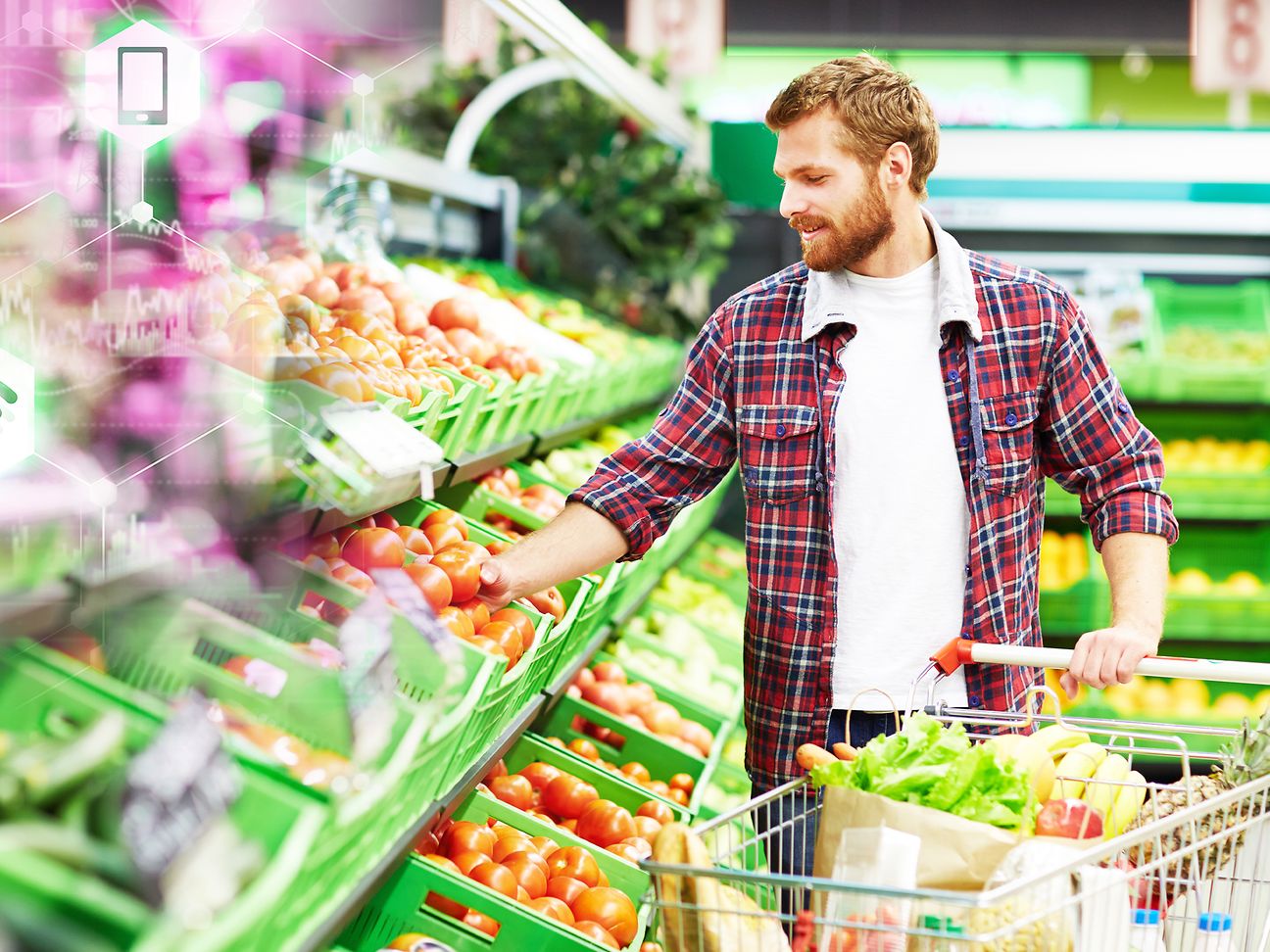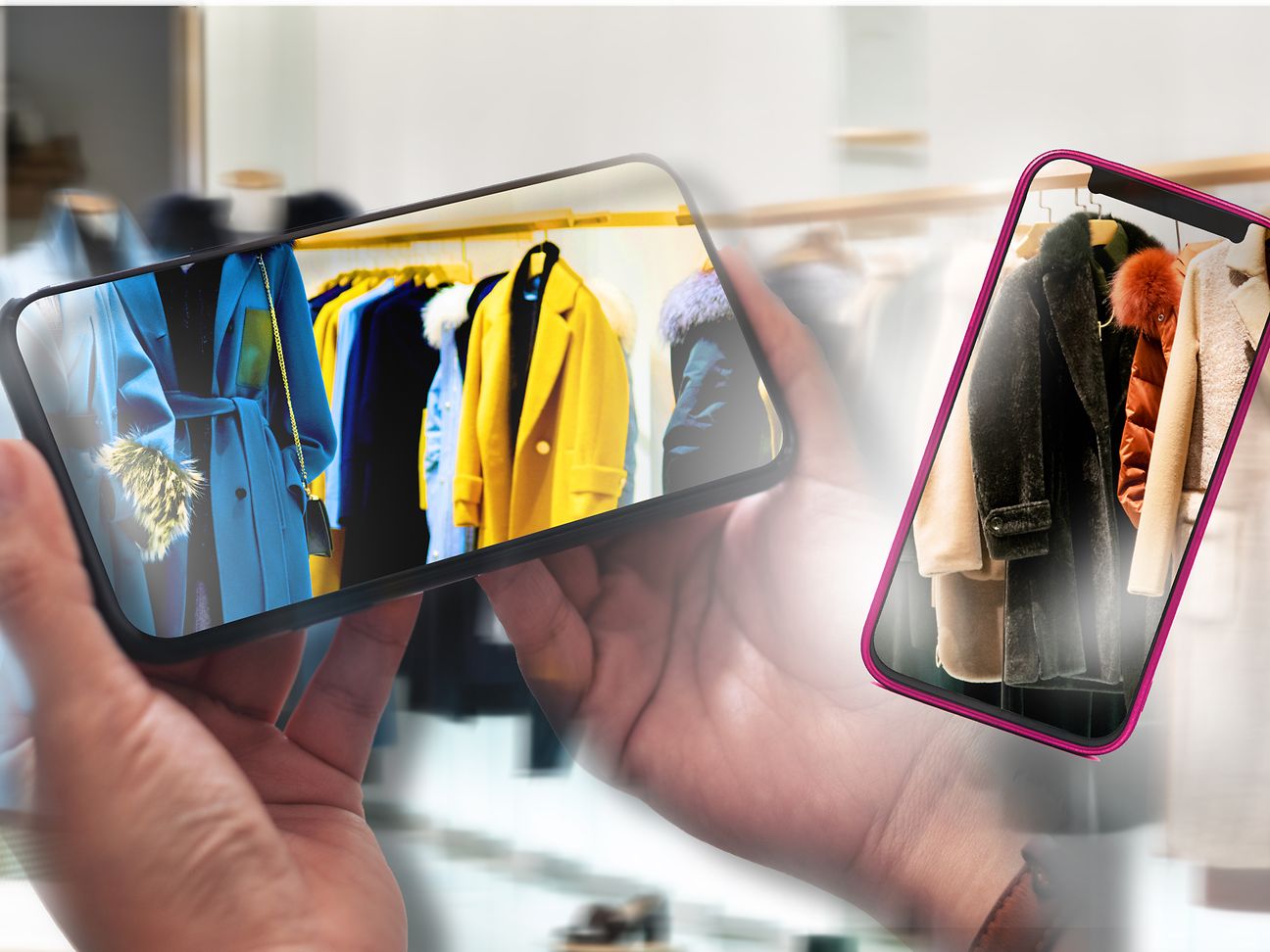

The little digital elves that make our supermarkets greener
Sustainability at the supermarket begins long before your shop. Digital solutions can provide valuable support. This is made possible with technologies such as the Internet of Things (IoT). “Digital elves” do a great job behind the scenes for sustainability before you even step foot in the supermarket. And help improve the shopping experience for all of us.
As customers, our purchasing habits help shape the retail of the future. People take sustainability into account when buying food in particular, according to a statista survey (in German) from April 2020.
As a matter of fact, retail is making many different adjustments in order to become more environmentally friendly and sustainable. 75 percent of commercial businesses considered sustainability [in German] to be a very important issue in 2020.
Retailers are concerned about high energy consumption in shops and warehouses. Organic agriculture, animal welfare, and fair wages must become a matter of course in the future. Procurement policies and warehousing both involve a great deal of manual effort and numerous sources of error which must be reduced. Especially sad is the fact that tons and tons of food have to be thrown away every day due to bad planning.
The sustainability report published in September by the Schwarz Group (Kaufland and Lidl) shows just how committed companies are to the issue of “sustainability”. It’s wide ranging: shops with a zero carbon footprint are just as important as using recyclable packaging materials. Refill stations for washing detergents are also in high demand. Customers want unpackaged, fair trade products which are manufactured organically. They want it to be easier to trace the food’s origin and know what’s on their plate. The discussion around food waste and energy consumption shows that there is a great deal that food retailers could do with intelligent networking. That all happens behind the scenes, hidden from the customers’ view, before we even step foot in the shop.
Connected processes to reduce food waste
Right now some 30 percent of all food produced across the world is destroyed. The reasons are manifold: Spoiled goods! Products past their use-by-date or with small blemishes. Food which just sits on shelves or in warehouses thanks to bad planning. Sustainable retail therefore begins on the delivery route. And that’s where the Internet of Things comes in.
Digitally connected logistics can help. Tracking solutions can be used to systematically check the quality of goods and services before they are even delivered. It monitors the cold chain and delivers information about the goods’ condition. So the sensor is reporting that the temperature is too high for the crates of strawberries? The retailers now know that the transport conditions are negatively impacting the goods. Put simply, this means that the strawberries could become wrinkly while they are still in the truck. The retailer can step in and either cancel or rearrange the order rather than throwing the goods away later. This new transparency provided by connected logistics and warehousing in the supermarket offers great potential for future learning. Transport conditions therefore need to be tailored as much as possible to the products’ requirements. This allows you to the see the exact point when you achieve the perfect combination of conditions which are suitable for the goods while still conserving resources. The small IoT helpers can provide support – of course the strawberries need to be chilled. You waste energy, however, by chilling them more than is necessary. What’s more, you don’t need a separate truck to have strawberries perfectly chilled. Even if foods have varying chilling requirements, they can still get to the store safely in the same truck. With the tracking solution provided by 4smartlogistics GmbH, strawberries and frozen food in thermoboxes can be monitored automatically. This allows for efficient logistical planning and reduces fuel costs and fleet expenditures.
At the supermarket, connected sensors in smart chillers and freezers help make sure seven percent less food has to be thrown away. Intelligent, connected supermarkets can bring more valuable insights as a result of quicker, more straightforward data analytics. For example, this means retailers can quickly learn that the Pink Lady apple is selling well and needs to be ordered in again soon. Or that there is currently a lot of milk in the chiller which will hit its use-by-date in two days. They can then quickly set up an attractive offer for customers, long before the milk goes bad and has to be thrown away.
Connected devices in the fight against energy guzzlers
Be it at the checkout, refrigerated counter, baking oven, or reverse vending machine: a huge amount of energy is used throughout the supermarket. The strong lighting in the sales area and warehouse also contributes, as does higher energy consumption for unmaintained refrigerators. If the supermarket has connected its devices intelligently with sensors, however, the store manager can view and analyze all of the data via a Cloud of Things platform. This helps save energy, among other things. If the door to the fish refrigerator has been left open for too long and is no longer at the required cooling temperature, the sensors will send a distress signal. The person in charge can then immediately initiate the necessary checks or maintenance appointments. Empty refrigerators which are in need of filling also send a notification in good time, meaning they don’t just keep cooling for no reason. Another advantage: by measuring the energy consumption of refrigerators, you can see whether they are ready to break. There is typically a significant increase in energy consumption if a fault is imminent. If retailers monitor their energy consumption, they can have the refrigerators checked by the service provider in good time. If the faulty device is repaired or replaced, it’s not just energy that is saved. By doing so, you can proactively prevent food from becoming spoiled.
On topicVideo IoT Service Button
Retail at the push of the button
BMW Video
ISS facility services
Taxi Klingel

